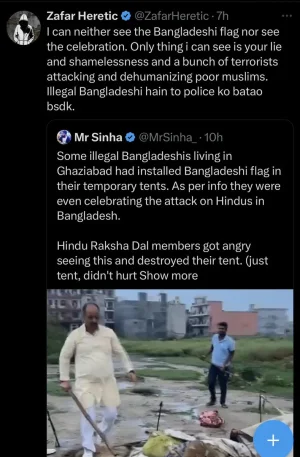Can a Regime Change Conspiracy Be Hatched in India?
Yes, it is possible—or rather, it nearly succeeded during the farmers' agitation on January 26th, 2021, when foreign-sponsored agitators came dangerously close to attacking the Red Fort and raising a Khalistan flag. Fortunately, security forces prevented this from happening. Although the Indian government could have responded harshly, it chose restraint. Meanwhile, Western media seemed to revel in the unfolding chaos, but their tone changed when they were reminded of the January 6th, 2021, U.S. Capitol attack, where politically motivated rioters stormed the Congress chambers with little resistance from law enforcement.
These events illustrate how politically motivated conspiracies can be instigated, sometimes funded by foreign governments, and other times through crowdfunding. In Bangladesh, the alleged U.S. and Pakistani ISI backed efforts to unseat the government have been widely reported in local media. Similarly, the attempted storming of the Red Fort in India was a privately funded agitation against the government's move to reform the grain marketing system. It's too early to definitively say how the student protests against the quota system in Bangladesh were financed, but reports suggest U.S. involvement.
India is a diverse nation, rich in language, culture, and religion, where different groups often have little in common. Yet, the country remains united, with approximately 85% of the population sharing the Hindu faith. This unity is what allowed the British to consolidate India from Kashmir to Cape Comorin and from Rajasthan to Assam.
However, political parties often exploit these linguistic and cultural differences to secure votes and assert influence, which is how India's diverse political system functions at both the national and provincial levels. These differences, though, can also be manipulated by hostile foreign powers looking to destabilize India. The "Five Eyes" countries—the U.S., UK, Canada, Australia, and New Zealand—have identified political vulnerabilities within India, particularly through the Sikh diaspora, to raise the specter of Khalistan. Despite knowing that a landlocked Khalistan, surrounded by hostile neighbors, has no viable future, they continue to use it as a foreign policy tool, with occasional violent incidents keeping the issue in the spotlight.
Recently, a U.S.-sponsored propaganda campaign has emerged in the East, advocating for a homeland for Christian minorities living in the hills. The proposed homeland would include large parts of Bangladesh, a few Indian districts, and much of Myanmar, with access to the sea. In India's state of Manipur, Kuki tribals in two districts have launched an armed insurrection, allegedly with U.S. support. The Christian sponsors in the U.S. draw parallels with the creation of Christian East Timor in the Pacific. The goal appears to be to keep tensions simmering. However, India is not weak and can handle these challenges. The governments of Bangladesh and Myanmar also view this movement as illegitimate and are prepared to suppress it decisively, to the detriment of those involved.
In conclusion, nations with significant diversity, like India, are more susceptible to external exploitation. However, India's common religion, despite foreign attempts to divide it, remains a unifying force. Moreover, the ongoing efforts to rebuild the Indian economy after 200 years of colonial exploitation provide an additional reason for the nation to stay united and resist foreign interference.





